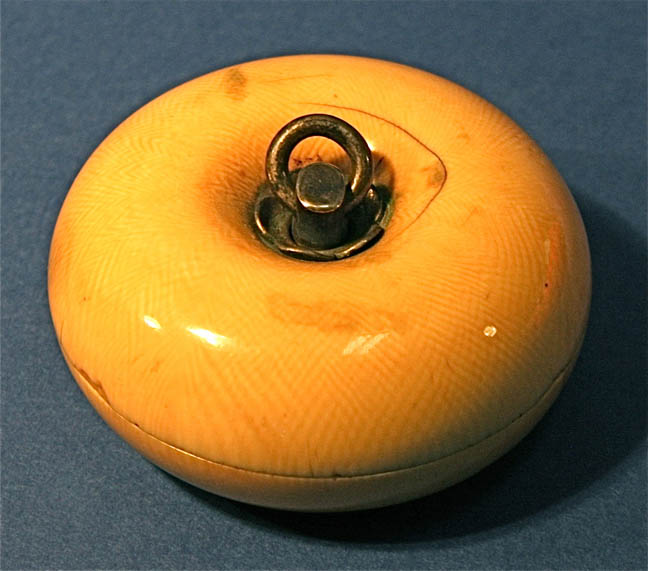

Title: Elephant Ivory Japanese Design Decorative Ornament Button
Shipping: $29.00
Artist: N/A
Period: 19th Century
History: N/A
Origin: N/A
Condition: Excellent
Item Date: 1870 to 1920
Item ID: 4446
🔥 Note, if any material is found to be questionable after a thorough examination and a determination that it might violate existing legal regulations, it is important to emphasize that Busacca Gallery would be prohibited from selling or distributing such material in compliance with current laws. It should be noted that Busacca Gallery's ability to make such determinations relies on the physical and careful execution of comprehensive testing and meticulous scrutiny by scholarly experts well-versed in the relevant subject matter. The description represents a simple story and opinion with the intention of stimulating conversation and providing education through its historical narrative. Busacca Gallery diligently endeavors to adhere to legal regulations and apologizes for any misrepresentations or confusion. For any inquiries, please do not hesitate to contact us. 415-215-6533 🎯 Beautifully carved handmade elephant ivory button from Japan. This button is very large and has a lovely design. The hook is made of Silver. Circa 1890's - Excellent condition. Exquisite detail, no visible damage but no doubt, there is a nick or flakes, from the Meiji period of 1868-1912. Slightly cream coloring to the ivory surface as you would expect from the age. It is difficult to find these high quality ivory carvings in excellent condition, most of these art objects are available in limited numbers so get them while you can! Please note: US law does not allow us to ship ivory out of the country.
Link: http://en.wikipedia.org/wiki/Button
In clothing and fashion design, a button is a small disc, typically round, an object usually attached to an article of clothing in order to secure an opening, or for ornamentation. Functional buttons work by slipping the button through a fabric or thread loop, or by sliding the button through a reinforced slit called a buttonhole. Buttons may be manufactured from an extremely wide range of materials, including natural materials such as antler, bone, horn, ivory, shell, vegetable ivory, and wood; or synthetics such as celluloid, glass, metal, bakelite and plastic. Buttons and button-like objects used as ornaments rather than fasteners have been discovered in the Indus Valley Civilization during its Kot Diji phase (circa 2800-2600 BC) as well as Bronze Age sites in China (circa 2000-1500 BCE), and Ancient Rome. Buttons made from seashell were used in the Indus Valley Civilization for ornamental purposes by 2000 BCE. Some buttons were carved into geometric shapes and had holes pierced into them so that they could attached to clothing by using a thread. Ian McNeil (1990) holds that: "The button, in fact, was originally used more as an ornament than as a fastening, the earliest known being found at Mohenjo-daro in the Indus Valley. It is made of a curved shell and about 5000 years old. Functional buttons, made from stone, have been found at the site of Gobekli Tepe, in southeastern Turkey, dated at 10,500 B.C.E. Functional buttons with buttonholes for fastening or closing clothing appeared first in Germany in the 13th century. They soon became widespread with the rise of snug-fitting garments in 13th- and 14th-century Europe.